Engineering in July: An ESP32 Battery Monitor, a DIY Servo Motor Tester, and More
July 22, 2022
on
on

Whether you are looking for a cloud-based battery monitoring solution or you want to build a servo motor test circuit, Elektor has an article for you. And the summer is a great time to dive into a new engineering project, right? Check out the following projects from previous July editions of Elektor.
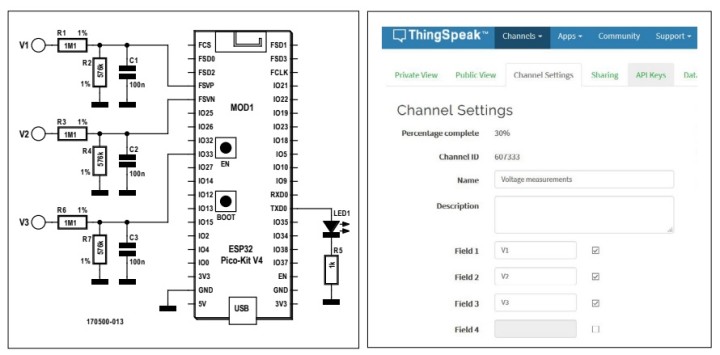
The design can measure three channels via Wi-Fi and Thingspeak. Get your foot in the cloud!
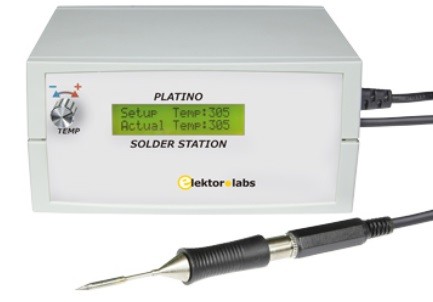
Its key features included the following: power supply (12 to 18 V DC, 5 A); Elektor Platino with ATmega328P microcontroller; 16 x 2 LCD; Weller RT-type solder bit with a 3.5-mm-jack connector; a three-pole jack socket to accept the 3.5-mm-Stereo jack plug; temperature select range from 90°C to 450°C; temperature regulation via Platino PWM signal; display showing actual and setup bit temperature; and a rotary encoder to select the setup temperature.
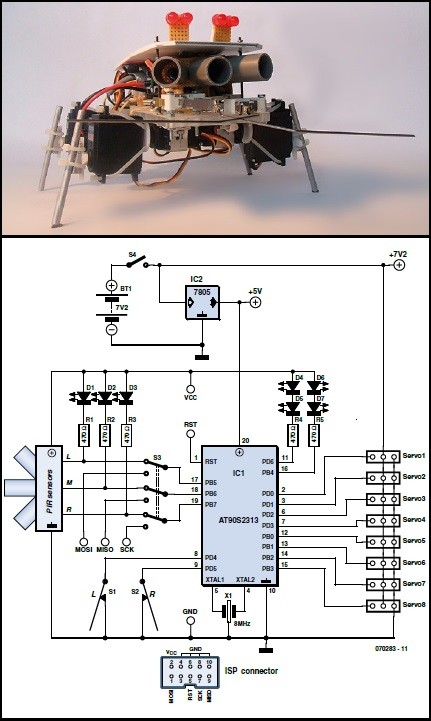
As long as the robot can see something, it will pursue it. If it can’t see anything, it advances by five steps in the hope of seeing something. After these five steps it remains standing and waits for new prey.
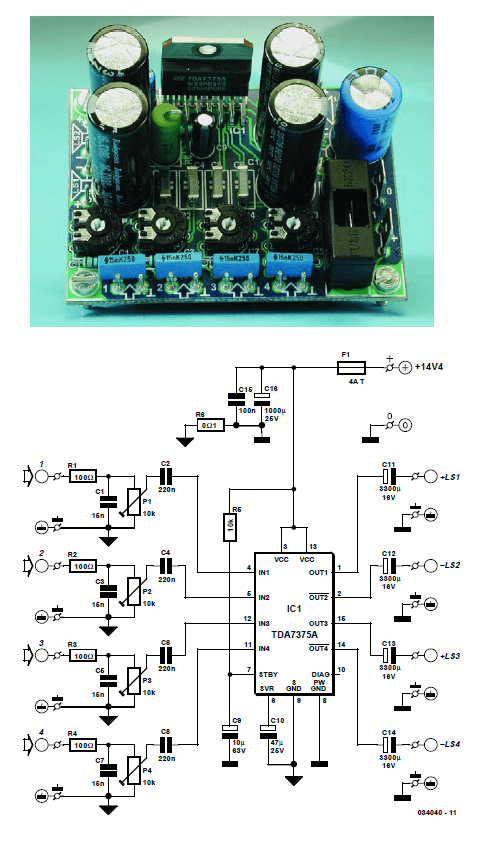
"The circuit shown here has four trimpots for individually setting the output levels of the amplifiers," he noted. "In addition, all inputs have RC networks (R1/C1, etc.) to block possible RF interference. The function of R6 is to separate the grounds of the input and output stages, in order to avoid possible ground loops that might arise with the use of multiple modules. A 5-W type is used for this resistor, in order to prevent it from going up in smoke if the ground connection of the power supply comes loose."
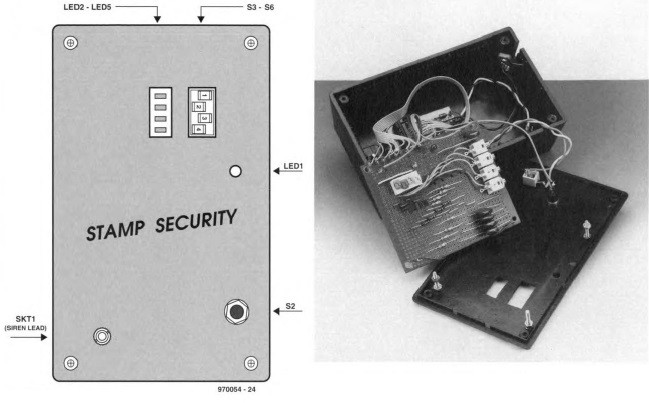 "The system is based on the premise that the best line of defence against an intruder consists of solid walls with firmly secured doors and windows," Bishop explained. "The aim is to prevent the would-be interloper from ever getting into the building. Electronically, this first line of defence consists of a peripheral loop. This is a loop of wire running around the protected area, joining switches placed at vulnerable points. The loop includes switches at every door and window by which a person might enter the home, not forgetting some of the more unlikely routes such as a hatch to the cellar or a skylight on the roof. The loop normally covers all possible entrances on the basement and ground floor and all accessible entrances on upper floors. Each entrance in the loop is protected by a normally-closed switch and the switches are connected in series. When any one door or window is opened, even by a few millimetres, the loop is broken. The control unit detects this event and sounds the alarm. If the intruder attempts to cut the wires of the loop, this too breaks the loop and triggers the alarm."
"The system is based on the premise that the best line of defence against an intruder consists of solid walls with firmly secured doors and windows," Bishop explained. "The aim is to prevent the would-be interloper from ever getting into the building. Electronically, this first line of defence consists of a peripheral loop. This is a loop of wire running around the protected area, joining switches placed at vulnerable points. The loop includes switches at every door and window by which a person might enter the home, not forgetting some of the more unlikely routes such as a hatch to the cellar or a skylight on the roof. The loop normally covers all possible entrances on the basement and ground floor and all accessible entrances on upper floors. Each entrance in the loop is protected by a normally-closed switch and the switches are connected in series. When any one door or window is opened, even by a few millimetres, the loop is broken. The control unit detects this event and sounds the alarm. If the intruder attempts to cut the wires of the loop, this too breaks the loop and triggers the alarm."
 "The small size of the printed-circuit board and the use of two series-connected 1.5 V batteries allow the tester to be housed in a compact case," the designer explained. "Connections to the TUT are by means of flexible test leads terminated in small crocodile clips."
"The small size of the printed-circuit board and the use of two series-connected 1.5 V batteries allow the tester to be housed in a compact case," the designer explained. "Connections to the TUT are by means of flexible test leads terminated in small crocodile clips."

“The proposed servo-motor test unit is, as can be seen from the circuit diagram, a downright simple design based on the use of Type 555 or 7555 timer chips connected in a cascade arrangement which can be expanded further to drive more than two servos at a time, if desired,” the author noted. "It is readily seen that the second and third stages of the circuit are identical."
ESP32 Battery Monitor (July 2019)
You can easily measure analog values with an ESP32 board and then send the data, using Wi-Fi, to a router and the ThingSpeak platform. This July 2019 article takes you through the process, particularly because wiring a PCB is not required.
The design can measure three channels via Wi-Fi and Thingspeak. Get your foot in the cloud!
Platino Solder Station (July 2015)
Interested in SMD solder stations? In the summer of 2015, Elektor presented an affordable and quite handy solder station built around the Elektor Platino Controller board. The unit was ideal for soldering SMD components and more.
Its key features included the following: power supply (12 to 18 V DC, 5 A); Elektor Platino with ATmega328P microcontroller; 16 x 2 LCD; Weller RT-type solder bit with a 3.5-mm-jack connector; a three-pole jack socket to accept the 3.5-mm-Stereo jack plug; temperature select range from 90°C to 450°C; temperature regulation via Platino PWM signal; display showing actual and setup bit temperature; and a rotary encoder to select the setup temperature.
Hunter (July 2007)
If you are into DIY robots, you'll love the four-legged Hunter robot. The compact robot can detect moving warm objects, such as people and animals, at a greater distance using a PIR sensor. The design features an Atmel AT90S2313 microcontroller, which has 2 KB of program memory, which provides plenty of room to program intelligent behavior.
As long as the robot can see something, it will pursue it. If it can’t see anything, it advances by five steps in the hope of seeing something. After these five steps it remains standing and waits for new prey.
Quad Car Amp (July 2003)
Originally intended to be used in a car, the quad car amplifier also can be used for a wide variety of other medium-power applications. As engineer Ton Giesberts explained, you can use the TDA7375A when you need a reasonable amount of audio power and only a relatively low supply voltage is on hand.
"The circuit shown here has four trimpots for individually setting the output levels of the amplifiers," he noted. "In addition, all inputs have RC networks (R1/C1, etc.) to block possible RF interference. The function of R6 is to separate the grounds of the input and output stages, in order to avoid possible ground loops that might arise with the use of multiple modules. A 5-W type is used for this resistor, in order to prevent it from going up in smoke if the ground connection of the power supply comes loose."
Stamp Security System (July 1997)
Elektor presented Owen Bishop's Stamp Security System in July of 1997. Built around a BASIC Stamp microcontroller, the design was intended for use in homes or offices.
Inexpensive Transistor Tester (July 1990)
Back in July 1990, Elektor reader J. Ruffell presented an affordable DIY design for testing transistors. The tester he developed allowed the transistor under test (TUT) to remain in circuit, provided the circuit had relatively high resistance values. The solution was suitable for both p-n-p and n-p-n transistors, and it also accepted Darlingtons.
Servo Motor Tester (July 1986)
Elektor has always has diverse audience with a wide variety of interests. For instance, the Servo Motor Tester circuit presented in this article was intended to appeal to two different kinds of Elektor readers: DIY robot builders and model aircraft/boat/train enthusiasts.
“The proposed servo-motor test unit is, as can be seen from the circuit diagram, a downright simple design based on the use of Type 555 or 7555 timer chips connected in a cascade arrangement which can be expanded further to drive more than two servos at a time, if desired,” the author noted. "It is readily seen that the second and third stages of the circuit are identical."
More Engineering to Come
Join us next month when we highlight more classic Elektor articles and projects. If you have any ideas or feedback, please share your thoughts in the comments section below. The engineering continues!Read full article
Hide full article


Discussion (0 comments)